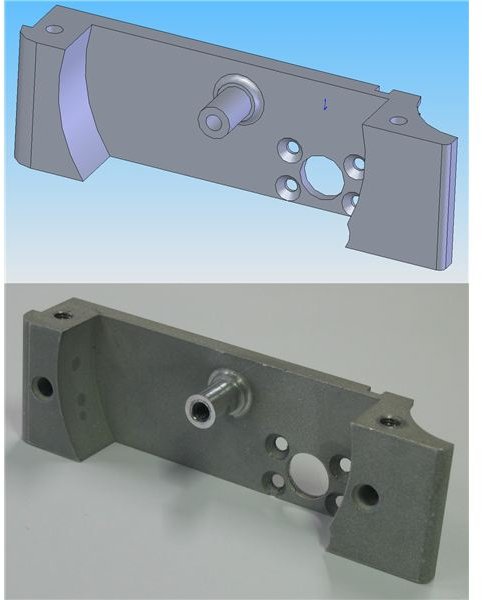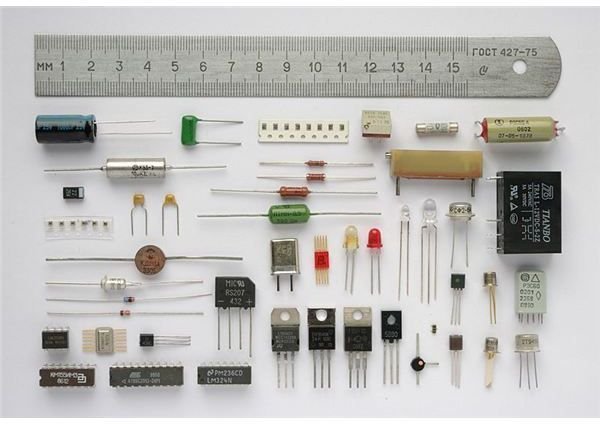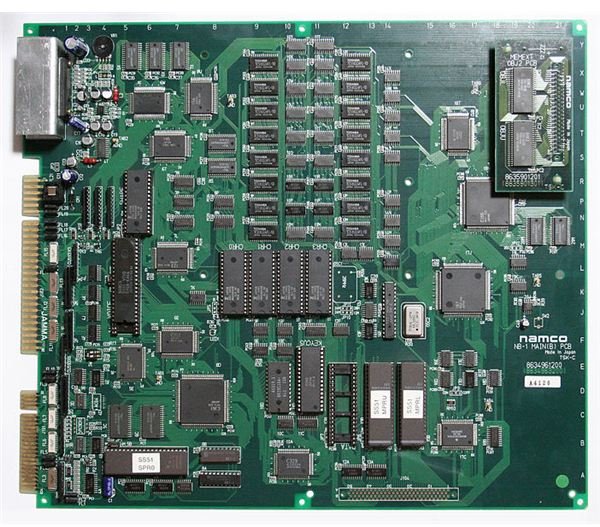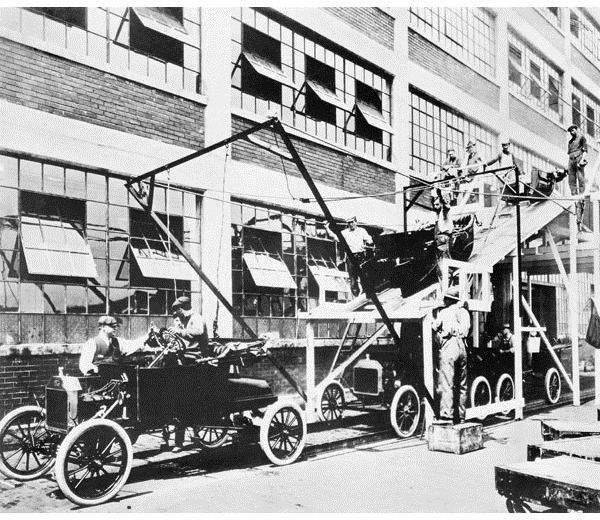History of Automated Assembly
Great advances have been made in the automation of the various activities formerly carried out manually. This is especially so in the intensive labor manufacturing industry, with the majority of these being almost fully automatic through the use of the latest technology. This has resulted in improved efficiency, along with a higher quality product coupled with the attendant savings in labor and costs.
In the following sections the history of automation will be examined; the first section gives an overview of some systems and industries that have been automated.
.
Overview of Automation in Industry
I first came across automation when I was at sea and saw the engine room automatic controls on diesel engines and, on steamships, the boilers being automatically controlled by a “Bailey Board.” There were many other examples, but I saw some impressive automation in action in an aluminum smelter where I worked as an engineer, here in the Highlands of Scotland.
I worked at the smelter from 1975 until it ceased operations in 1981. It was considered a modern partially-automated plant, using the latest methods of automatic smelting and casting techniques. This was not just for efficiency, but also for the safety of the men working in hazardous areas.
In those days, for the aluminum smelter, like for most manufacturing industries, the automation of the time consisted of sensors or “magic eyes” or proximity switches, along with limit switches with long tails and solenoid valves, relays, and timers. These operated hydraulically and pneumatic cylinders were the basis of most of the material handling conveyor systems and furnace casting operation.
One such system of a material handling conveyor, incorporating some of the above components is shown below:
The automobile industry is another example of automation, with robots eventually taking over a lot of manual activities such as spot welding and spray painting. The trade unions were pretty strong in those days, especially so in companies that were modernizing their plants through automation. The unions were against this, not wanting their members to lose their livelihood through automation such as robotics.
These days, of course, we have computers that control electronic automation.
History of Automation in Manufacturing
The Early Years
In a newly built factory in 1913, Ford Motor Company introduced the assembly line for car production. Prior to this, single cars were built by a number of skilled and unskilled workers, in an old factory.
So the assembly line can be considered one of the first forms of automation in the manufacturing industry. It certainly boosted Ford Motor’s production rates, as well as their profits, but he was very good to his employees, giving them a rate of pay over and above other industries in the area. Their pay even allowed them to own one of the cars they produced, which was unheard of in the industry.
Ford’s assembly line and mass production was the first in the world; cutting the car assembly time from one car every twelve hours to a car every one and a half hours.
A Ford assembly line image from Wikipedia, author unknown, is shown below.
1930’s Automation Advance
Japan was in the forefront of developing components for use in industrial manufacturing automation. During the 1930’s one of their forward looking companies developed a highly accurate electrical timer, along with the first micro-switch and protective relays. All of these were immediately used in industry.
At about this time, the rest of the world were beginning to see the advantages of automation, and a lot or research and development was taking place, with the major component being a solid state proximity switch.
During the Second World War between 1939 and 1945, automation continued especially in tanks, warships, fighter airplanes, and landing craft used to get the soldiers ashore from troop carriers. Related: The History of the Liberty Ships
Rebuilding the Manufacturing Industry in 1950’s Japan
Japan officially surrendered in 1945; the US and Allied Forces occupied Japan from then until 1952. An industrial rebuilding program, assisted mainly by the US was immediately started. This meant they were using new technology, including the latest automation that was far superior to the rest of the world who were mostly still manufacturing goods using old fashioned methods.
Japan was soon to become a world leader in automation, especially in the automobile industry. Nissan, Toyota, and Honda produced thousands of new high quality, reliable, modern cars. These had standard accessories that most other car manufacturers classed as extras. They were able to do this because of the money saved using automation technology. These high standards, coupled with realistic prices that could not be bettered by other car manufacturers, ensured their success in this industry.
I was engineer on a copper smelter Zambia in the 1970s and bought an old British Wolseley car for getting back and forth to work. It blew a cylinder head gasket and I tried everywhere to get one, but it was pretty old and I had no success. I wrote to a dealer in the UK for spares, but in between times I was told that a Toyota four-cylinder engine was the same as the Wolseley, and these gaskets were available from the local Toyota garage! It seems that Toyota bought the design plates for the Wolseley engine, and fashioned one of their engines on them; part of their rebuilding their industry in the 1950s.
Japan is now one of the world leaders in automated manufacturing, with their goods being exported worldwide.
Modern Automation Components.
At present automation makes a vital contribution to industrial manufacturing. Here are some of the innovative components.
- Computers
Computers control almost all forms of automation. This began in the 1980s where they were used to control some parts of the manufacturing industry.
Today computer integrated manufacturing, or CIM, is at the forefront of automation, controlling virtually the entire process of creating a component, from the design, engineering, to the forming or casting and to the machining stage using such as an intricate machine as a CNC. An example of this is shown below from Wikipedia by Mike1024.

- Robotic Robots have replaced a lot of activities formerly carried out by a human, with one robot replacing as many as ten workers. They are used exclusively in the automobile industry for welding and spray painting, as well as final assembly at various work stations. Another purpose for the robot is the mass production of printed circuit boards. Here the robot selects the correct minute electronic part, placing it onto the printed circuit board with accuracy, and testing the circuits before labeling them and packaging. A Taiwan company producing printed circuit boards announced earlier his year that it is going to increase its present use of robots from 10,000, to over one million during the next three years. A typical role of robots welding is shown below from Wikipedia by Phasmatisnox.

- Electronic Components
These can be classed as passive that operate on AC power and include resistors and capacitors or as active components that operate on DC power and include transistors and vacuum tubes used for amplification. A selection of typical electronic controls is shown below from Wikipedia by Kae.

- Printed Circuit Board A PCB is made from electronic components, and the vast majority of electrical components used in industrial manufacturing will contain a PCB. Connection between the various components is by pathways etched into a copper foil and, as we have seen, PCB’s are invariably automatically assembled using robotics. An example of a modern PCB is shown below from Wikipedia byYaca 2671.

So we started with very basic automation using sensors, limit switches, and solenoid valves and finished by looking into today’s electronic automation consisting of computerization, robots, electronic components, and printed circuit boards.
I wonder where the next 30 odd years take us. I would be 95 years old then and probably “kicking up daisies.” B ut you never know, with advances in automation in the medical sector, maybe they can keep this old Irish engineer going until then and I will see for myself.
References
- wardsautoworld: History of Ford Motor Company
- jimpinto: A Short History of Automation Growth
- haascnc: CNC Machining Equipment
